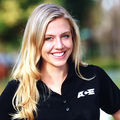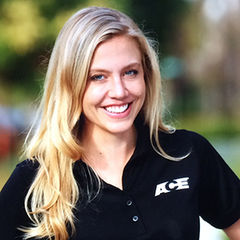Comprehension and application of concepts presented in the ACE certification study resources are fundamental to successfully preparing for your competency-based certification exam. However, understanding the types of questions one might encounter as well as having a test-taking strategy, can be the first step to selecting answers with confidence. Knowing the types of questions to expect can help you adequately prepare and study for the ACE certification exam. Or, if you do come across a challenging question on the actual exam, it is imperative to know some testing techniques for multiple-choice questions. This blog will outline the types of questions used on the exam and provides useful test-taking tips.
Types of Questions:
All ACE certification exam questions are based on an exam content outline for the specific certification program. All questions are presented in a multiple-choice format consisting of a stem (a statement or question often including keywords) and response options with only one correct or clearly best answer and distractors (response options that usually contain common errors). –The stem could be a direct question, an incomplete statement, or a best-answer format question. For example:
- What muscle extends the knee? (direct question)
- The order of fitness testing is (incomplete statement)
- Which listed exercise would be most effective in strengthening the hip flexors? (best answer format, frequently seen in ACE exams)
The three main types of multiple-choice questions used on ACE certification exams are recall, application, and analysis.
Recall questions, which assesses facts, terminology, and comprehension of important principles, assess a candidate’s ability to remember information. This is referred to as a ‘memorize and regurgitate' type of question. This type of question is often seen with anatomy-based questions. For example, “Which muscle flexes the shoulder joint?”
Application questions pose a problem or situation that you might encounter when working in the profession. These types of questions demand more than simple memorization of facts and assess a candidate’s ability to recognize the proper use of information and principles to solve problems encountered on the job by health and exercise professionals. For example, “results from the client’s Thomas test with each leg reveal that the back of the lowered thigh does not touch the table, but the knees do flex beyond 80 degrees. Based on this information, what stretch would be MOST important to include in the client’s initial program?”
Analysis questions assess the ability of candidates to examine information and understand the relationship between its components. These questions are based on hypothetical situations and require the integration of analyzing facts, identifying a problem, and recognizing a solution. For example, a food label may be shown, and the question posed could be, what is the total amount of kilocalories (kcal) and percentage of calories that come from fat in the entire bag?
How to Approach Multiple Choice Questions:
Now, when it comes to having a strategy for multiple-choice questions remember the Do’s and Don’ts for approaching a multiple-choice question:
- Do anticipate. When looking at the stem of the question, search for keywords. Consider what the question is truly asking and try to anticipate the answer before even looking at the response options. If you see an answer listed that aligns with what you thought, that is a good indicator you are on the right track.
- Do assess. Read the question or statement and response options thoroughly. Assess what is being asked and determine the important details. While it may be tempting, do not skim-read the questions and response options. Some options have two components – ensure both parts are accurate, and that the entire answer is the best, most appropriate response to the question.
- Don’t assume. Do not assume something (a fact, theory, detail) that isn't listed in the stem. Do not overcomplicate the question or add in theoretical or hypothetical aspects to the question that is not there. Only use the information that is presented in the question – chose the simple interpretation. If you find yourself asking, “what if…” during the test, that may be an indication you are overthinking the question or answer.
- Don’t apply personal feelings. Do not over apply personal experience. This does not imply that your personal experience is wrong, but the exam cannot test individualized knowledge. Rely on the information presented in the educational resources and refrain from assuming answers will be based on your personal beliefs, feelings, and experience as this can lead to frustration.
Utilizing practice exams, found in your online content, can be exceptionally helpful in applying these strategies. When you are taking your actual exam and you come across a difficult question, take a deep breath, remember the Do’s and Don’ts, and select the most appropriate choice for that specific question.
Additional information on exam development, questions, and testing-taking tips can be found in the ACE Certification Candidate Handbook.




 by
by 





 by
by